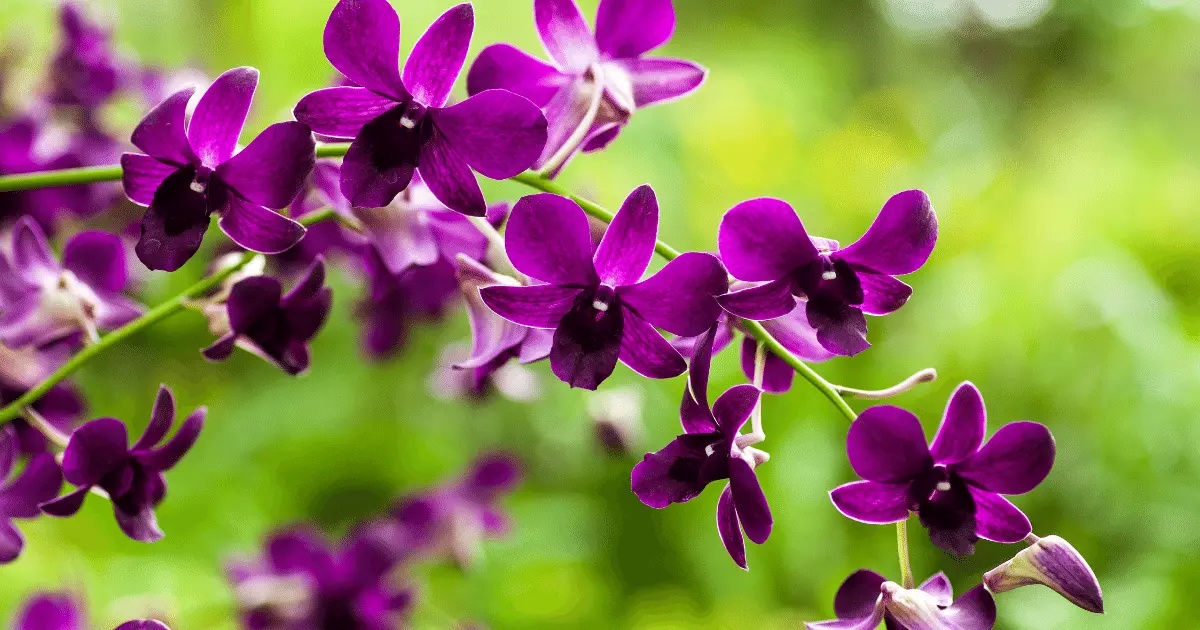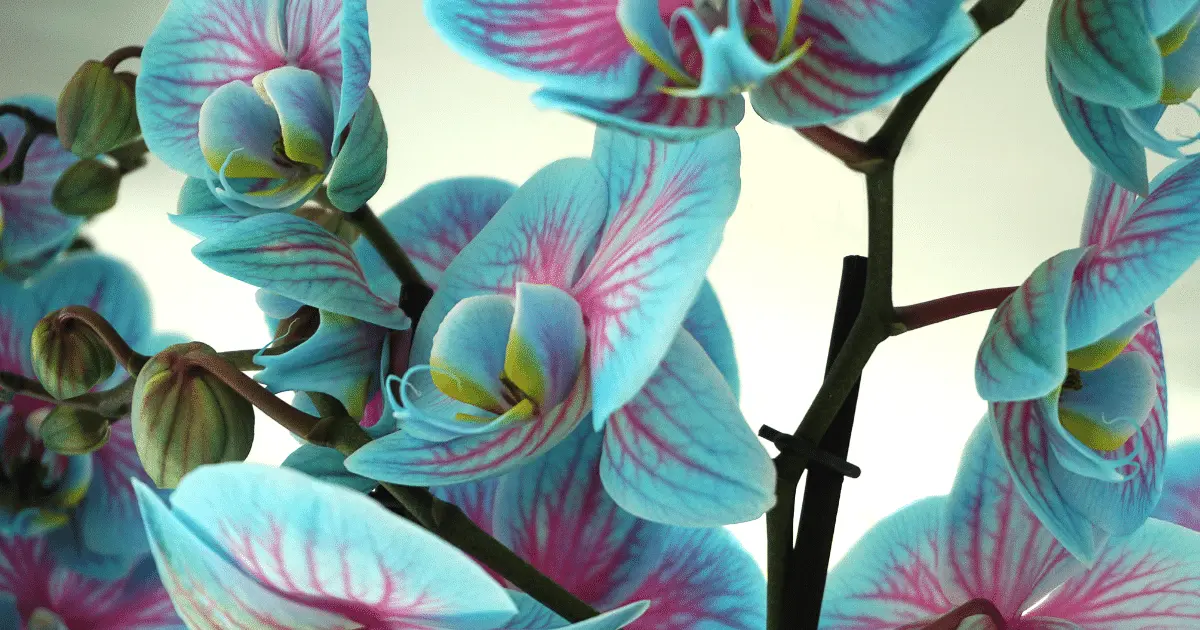Orchids have the kind of beauty that stands out among other flowers in a garden or a bouquet arrangement. They effortlessly catch your attention and steal your heart. Simply put, they are amazing.
The intricate beauty of orchids is utterly unrivaled in the plant world. They are a perfect addition to any situation they are found in, with the variety of colors, shapes, and forms that each variety has.
Although they are a bit expensive and somewhat particular about their needs, a few things are more satisfying than a view of orchids in bloom.
When do Orchids Bloom?

Bloom time varies among the different varieties and can be affected by the weather, but March is the peak blooming period for most orchid houseplants.
A natural orchid cycle will see different varieties bloom in early spring, summer, and fall.
Some varieties bloom in winter (e.g., Lady slipper orchids) as long as the temperature is a minimum of 50 to 65 degrees Fahrenheit.
March is when orchids are at their most showy because some winter varieties are still flowering, and the ones that bloom in early spring are just beginning to open up.
How Long do Orchids Take to Bloom?
For an orchid plant grown from seeds, it will take at least three years, possibly eight years, before you see a flower.
While these years seem like a lot at the beginning, seeing one’s plant full of beautiful blooms makes all the stress you’ve gone through worth it.
How Long do Orchid Blooms Last?

No flower lasts forever, but orchid blooms last so long in the plant it makes one almost forget this fact. Each individual flower can stay as long as 1.5 to 2 months if you take proper care of your plant.
The blooming season can last 60 to 120 days, depending on the specie you have.
Examples include Cattleya orchids which can bloom for six weeks; Dendrobium orchids, which last for six to eight weeks; and Phalaenopsis orchids, which can flower for around 16 weeks.
Do Orchids Rebloom?
Although orchids bloom long, the flowers will eventually fade and drop. After this, the plants usually go through a rest period and remain dormant for months.
The good news is that you can get your orchid to rebloom in the same year. All you need to do is provide the plant with proper care.
Understand that for an orchid to rebloom, it has to have been healthy and enjoyed good care during its growing and flowering season.
There are ways you can force your orchid to rebloom. First, you’ll have to trim the bloom spike when it has begun to turn brown, and the last flower has fallen off.
Cut the flower spike back to the base. The base is where that spike initially appeared on the main stem.
After, continue to keep the plant in normal growing conditions – bright indirect light, warmth, and water regularly.
Fertilization is important for a reblooming orchid. You can use slow-release pellets or diluted liquid fertilizer.
When you notice new leaves, move the plant to a cooler location (55 to 65 degrees Fahrenheit night temperatures). This drop in temperature will nudge the plant to rebloom.
After a month or so in cool temperatures, a new flower spike should appear. Now, you can move it back to its warmer place.
Remember that not all orchids bloom more than once a year.
How to Take Care Of a Blooming Orchid

When an orchid is already blooming, you’ll do everything possible to make those blooms last longer. That is why you should follow the tips below.
Keep your orchids away from harsh sunlight and extreme heat. However, could you provide them with enough sunlight?
The more light they receive, the longer the blooms will last and the higher the chances for rebloom.
You can put them in front of a window so they can have access to the sun, but indirectly.
Keep the temperature and watering schedule stable. Keep the medium moist and not soggy.
You can water your plant in the morning to have enough time to dry during the day. It is better to allow the medium to dry out a little before watering again.
There is no need to fertilize orchids while they are blooming. Also, try not to move your plant from one place to another, as this can cause stress.
How to Care For Orchids After Blooming
After-bloom care is equally as important as every other care for an orchid. This can set up the future of your plant.
At this point, the plant will need a little rest to gather energy before it blooms again, so a little care will not go amiss.
After the last flower has died, you can cut the spike off, although you can leave it to fall off naturally.
You may re-pot your plant at this point. During this resting period, the plant will put out new foliage and roots, allowing more room for growth.
You can fertilize with a liquid orchid fertilizer around once a month to boost your plant.
How to Make an Orchid Bloom
If you are trying to get your orchid to bloom, the first thing to do is to move it to a brighter location. While doing this, ensure the light intensity is correct for your specie.
Keeping in mind that orchids cannot handle direct sunlight, plant your plant near a window so it can get as much as possible but not wither from excess.
Check the temperature of the room in which the plant is kept. Dropping the temperature by 10 degrees Fahrenheit at night will trigger the plant to bloom.
Water your orchid only when the potting material appears dry. Avoid overwatering, as this could kill your plant.
Adjust the humidity around your plant to help it grow a little better. You can group several plants, mist frequently, or buy a humidifier.
Also, keep the air around your plant fresh by opening a window or turning a fan on low close by.
Fertilize your orchid once a month during the growing season. Follow the instructions for the orchid food carefully.
Check your plant carefully to determine the reasons for its lack of flowers. If the leaves are dark green, it’s not getting enough light.
If they are reddish green, it means the sunlight is too much. You’ll need to change the location of your plant.
If the stems and leaves appear shriveled or withered, your orchid needs more water.
Make sure the growing medium is fast draining and has good air circulation. Provide your orchid with the appropriate potting mixture.
Lastly, pay attention to the season. Impatience is one of the biggest reasons people believe their orchid isn’t blooming.
As mentioned earlier, different orchids have different blooming seasons. If it isn’t your plant’s season, it will not bloom, so be patient and get the correct information.
